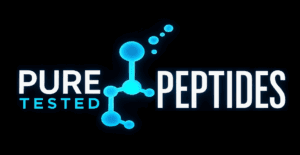Tesamorelin vs. Ipamorelin: Clinical & Research Differences
A clear, research-oriented comparison of two GH-pathway peptides—mechanisms, regulatory status, study domains, and practical distinctions for laboratory investigators.
Quick Overview
Tesamorelin
Class: Synthetic analog of growth hormone–releasing hormone (GHRH).
Mechanism: Stimulates pituitary release of endogenous GH → increases IGF-1.
Regulatory status: FDA-approved for reducing visceral adiposity in HIV-associated lipodystrophy.
Research focus: Metabolic disease, visceral adiposity, body composition, NAFLD, aging-related metabolism.
Ipamorelin
Class: Selective growth hormone secretagogue (GHS), ghrelin receptor agonist (GHS-R1a).
Mechanism: Triggers GH release with limited effects on cortisol and prolactin compared with earlier GHS agents.
Regulatory status: Not FDA-approved; used in preclinical and experimental research.
Research focus: Models of tissue repair, recovery, and longevity; interest due to receptor selectivity and “clean” hormonal profile.
Key Differences at a Glance
| Feature | Tesamorelin | Ipamorelin |
|---|---|---|
| Pharmacologic class | GHRH analog | Ghrelin mimetic (GHS-R1a agonist) |
| Regulatory status | FDA-approved (HIV-associated lipodystrophy) | Research use only (not FDA-approved) |
| Primary mechanism | Activates GHRH receptors → pituitary GH → IGF-1 | Selective GHS-R1a activation → GH release |
| Clinical evidence base | Robust, including randomized trials and long-term data | Limited; preclinical/early exploratory studies |
| Common research domains | Visceral fat reduction, metabolic/lipid dynamics, NAFLD, aging metabolism | Recovery/repair models, body composition exploration, longevity paradigms |
| Off-target endocrine effects | Physiologic GH/IGF-1 axis activation | Designed for minimal cortisol/prolactin impact vs. older GHS |
Mechanistic Notes for Researchers
Tesamorelin (GHRH analog)
Tesamorelin binds pituitary GHRH receptors, enhancing pulsatile GH secretion and secondarily elevating IGF-1. Clinically, it has demonstrated reductions in visceral adipose tissue in people with HIV-associated lipodystrophy, with complementary findings on lipid profiles and metabolic endpoints in controlled studies.
Ipamorelin (Selective GHS)
Ipamorelin selectively targets the ghrelin (GHS-R1a) receptor to induce GH release. Unlike some earlier secretagogues, it was engineered for reduced activity on ACTH/cortisol and prolactin pathways, which contributes to its research appeal in controlled experimental settings.
Practical Considerations for Study Design
- Endpoint selection: Tesamorelin studies often emphasize visceral adiposity, metabolic markers, and body composition; Ipamorelin studies may examine GH-related recovery and adaptation models.
- Safety monitoring: Tesamorelin benefits from an established clinical safety dossier; Ipamorelin typically warrants exploratory safety endpoints aligned to ghrelin-pathway activation.
- Translatability: Regulatory approval of Tesamorelin supports more standardized clinical protocols; Ipamorelin remains primarily exploratory and preclinical.
FAQs
Which peptide is appropriate for human medical treatment?
This page does not provide medical advice. Tesamorelin has an FDA-approved indication (HIV-associated lipodystrophy). Ipamorelin is not FDA-approved and is limited to research contexts. No therapeutic use is advised or implied here.
Do both increase IGF-1?
Both operate through the GH axis and can elevate IGF-1; Tesamorelin does so via GHRH receptor activation, while Ipamorelin stimulates GH via the ghrelin receptor with a selective profile in controlled research settings.
Are there head-to-head clinical trials?
Direct head-to-head clinical trials are limited; most data come from separate program histories—robust for Tesamorelin in its approved indication, exploratory for Ipamorelin.
References (max 2)
- Falutz J, et al. Metabolic effects of tesamorelin, a growth hormone–releasing factor analog, in HIV patients with abdominal fat accumulation.
New England Journal of Medicine. 2010;363(4):305-316.
PubMed - Raun K, et al. Ipamorelin, the first selective growth hormone secretagogue.
European Journal of Endocrinology. 1998;139(5):552-561.
PubMed
Compliance & Research-Only Disclaimer
Pure Tested Peptides specializes in research-grade compounds for laboratory use only. All information provided is for
educational and scientific purposes. Products are not medicines or drugs, are not intended for human consumption,
and have not been evaluated or approved by the FDA to diagnose, treat, cure, or prevent any disease.
https://youtube.com/shorts/38xwfwksdLM?si=kM7U3i_VxIHw5iXz
https://youtube.com/shorts/jmtYEA69M3s?si=OSQk5Cyyndl3u5YN
